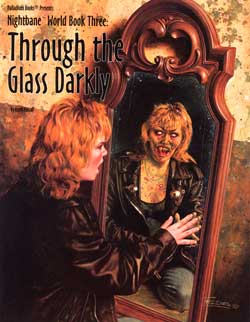It seems while I was busy working an idea swept the OSR blogs: identifying what is your
D&D and the idea of personalized versions. I'm very glad to see this as I was considering writing about the idea that we should view
AD&D as a fully worked example of writing your own
D&D, basically the idea behind the
Greyhawk and
Blackhawk supplements on steroids.
So, my answers to
Brendan's 20 Questions answered for
Swords of the Red Sun (although
The World After is pretty similar).
Ability scores generation method?
Roll 3d6 7 times and record them in order. You may swap any two and the results are your ability scores in Holmes order (ST, IQ, WS, CN, DX, CH) and your initial gold (last roll times 10).
How are death and dying handled?
Unconscious at 0 and dead at negative constitution.
What about raising the dead?
It has been done in legend but no local clerics or mages can do it. Think of
fal tor pan at the end of
Star Trek III.
How are replacement PCs handled?
As a general rule you come in with half your prior experience at the first logical place (or some value of logical place) for me to add your character.
Initiative: individual, group, or something else?
Group on a D6 then high to low, although I might experiment with a group roll with individual Dex bonus applied to the D6. Ties are simultaneous action.
Are there critical hits and fumbles? How do they work?
No.
Do I get any benefits for wearing a helmet?
Not generally, but if players start observing and using it the monsters will do the same.
Can I hurt my friends if I fire into melee or do something similarly silly?
Generally no, but if you're trying some wild maneuver you might.
Will we need to run from some encounters, or will we be able to kill everything?
Under the Red Sun things do not scale to you...you might have a cakewalk and you might need to run away, run away.
Level-draining monsters: yes or no?
Yes, but XP (down to the min for the next lowest level) only, not HP/to hit/etc.
Are there going to be cases where a failed save results in PC death?
Yes, but generally not without you needing to be stupid (no save or die poison from most monsters for example).
How strictly are encumbrance & resources tracked?
About once every other session using the
Lamentations of the Flame Princess system (with strength bonus applied to the cutoff points for levels).
What's required when my PC gains a level? Training? Do I get new spells automatically? Can it happen in the middle of an adventure, or do I have to wait for down time?
Training for proficiencies (I will be using the
Adventurer, Conqueror, King system) and spell training for mages. The system will use the weapon's mastery and spell learning rules from
Dark Dungeons. I tend to hold all XP until you get back to a safe area so you really do wait for downtime. Also, I use the re-roll all hit dice and taking the higher of old or new rule until you hit name level.
What do I get experience for?
Travel, seeing unique and legendary things, killing monsters, killing named monsters, defeating human villains, and treasure. Normal monsters and treasure awards are straight out of
Basic D&D (Moldvay) and the others are drawn from
Neoclassical Geek Revival.
How are traps located? Description, dice rolling, or some combination?
Combination, but you generally get more results if you are descriptive.
Are retainers encouraged and how does morale work?
Yes and they are straight out of
Basic D&D (Moldvay).
How do I identify magic items?
In town each item takes a day for an automatic identify. In the dungeon for immediate usage you can experiment in play or take a off camera experiment. Off camera you take a full turn (with wandering monster roll if enough time has passed) and your mage makes a saving throw. If he succeeds you figure it out. If not you get a wandering monster roll with +1 per turn you've been experimenting.
Can I buy magic items? Oh, come on: how about just potions?
Some low powered charms and fetishes (hedge magic) which includes some potions. If you ask about buying a Hammer of Thunderbolts you'll probably find several :)
Can I create magic items? When and how?
Yes, at level 15+. As an aside, this is the point when mages can learn more spells of a given level than they can cast per day (ie, moving to Companion escapes the B/X limits) and research brand new spells.
What about splitting the party?
It's your funeral.



